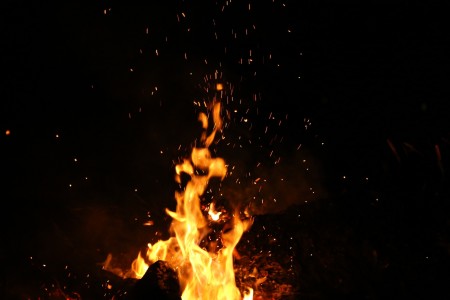Greetings from the AASLH’s archives! Today I want to pose a few questions inspired by one intriguing archival finding. These questions surround the fact that when we, as museum professionals, consider the effects of catastrophic events upon our institutions, we find our minds predictably drifting toward preserving the safety of our collections and facilities – and rightfully so! The proliferation of materials on navigating the technical aspects of disaster recovery suggests its importance. However, the question I raise today approaches recovery from a different angle, namely: how should an institution use its resources to aid in the recovery of the communities that it serves?
Of course, as someone who once processed acquisitions in the bunker-like safety of the Minnesota Historical Society’s basement, I don’t quibble with the necessity of protecting collections; neither did my institution. Case in point: I don’t think that the temperature in the processing space was kept that low for my health. A well-preserved collection might prefer those chilled conditions, but my goosebumps–during a Minnesota winter, no less–begged to differ. Indeed, it is no question that museum professionals have a knee-jerk reaction to protect and preserve collections from damage (often at the expense of our own comfort!), but are we trained to react as instinctively to the needs of our communities during disasters?
I ask because, as I pore over the AASLH archives, traces of disaster recovery, namely those surrounding Hurricane Katrina, continually crop up. I’ll admit that when Katrina struck I was quite young (no joke–I was in elementary school), so its effect on historical and cultural sites did not cross my mind. Now over a decade later and engrossed in the AASLH’s hefty list of Hurricane Katrina relief projects, I am finally learning about the affected institutions. This was a shocking discovery for me, and one of which I learned only through reading accounts included in the recovery list. I found it particularly saddening to read about historical societies whose collections suffered irreparable flood damage and to discover reports of historical sites that were washed away entirely like Biloxi, Mississippi’s Brielmaier House, mentioned in this New York Times article.
The AASLH relief list itself contained the names and locations of affected institutions alongside columns that housed the reported or expected damage inflicted upon each site. Still other columns listed requests for help from staff across the region, many of whom hoped that assistance might arrive in forms ranging from shop vacs and other vital equipment to clean up flooded facilities all the way to volunteers whose labor was desperately needed to salvage facilities and collections in danger of permanent ruin. Although the list focused on facility/collection repair, it also hints at other forms of rehabilitation, specifically where some museums hoped to launch recovery projects of their own to mend the fabric of affected communities. At least one institution on the list indicated its wishes to “stand as a beacon of hope” for those who “lost their history” to Katrina. I wondered how an institution might accomplish such an undertaking as guidance on the matter is sparse.
So much information is available on collection/facility recovery, and many institutions possess technical plans for disaster recovery, but what happens when the public turns to museums for knowledge, comfort, or explanation in the midst of a disaster? Does your institution have a predetermined plan or philosophy for how you might react? Finally, what plans and resources can we, as stewards to the public, cultivate for our disaster recovery efforts that will extend beyond the technical preservation of exhibits and collections to also encompass the cultural and historical needs of the communities we serve?





